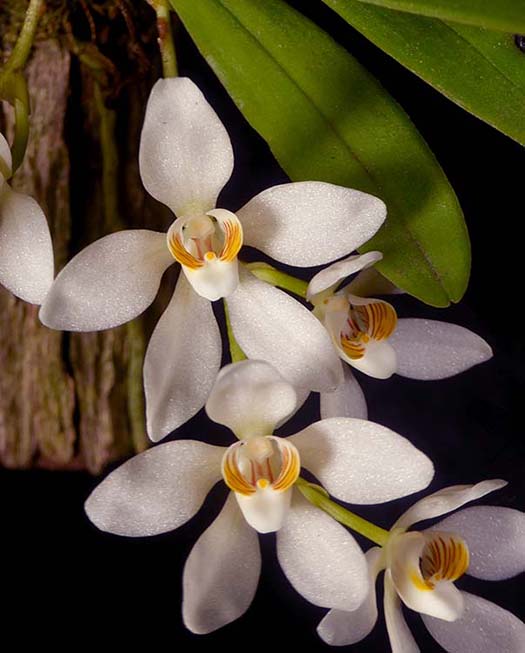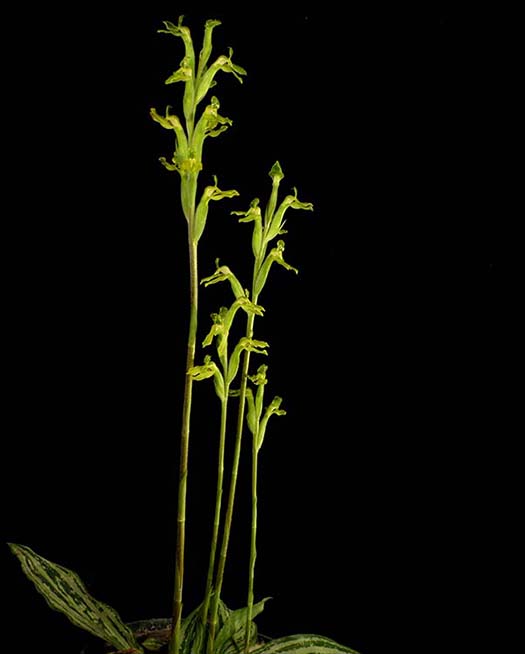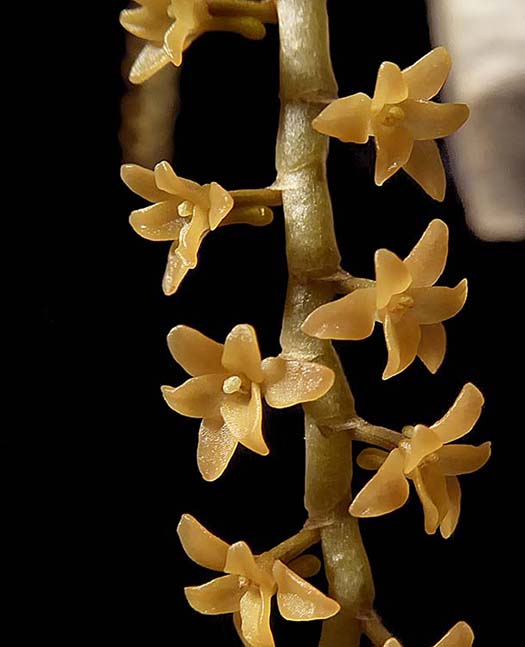April, 2019
From Jan Hennessey:
|
|
 |
|
 |
Phalaenopsis schilleriana |
 |
|
Dendrobium teretifolium var. fairfaxii f. aureumMost often this species is white. The flowers of this one are pale yellow. |
|
From Roberta Fox:
|
|
A few of my terrestrials are also in bloom... |
|
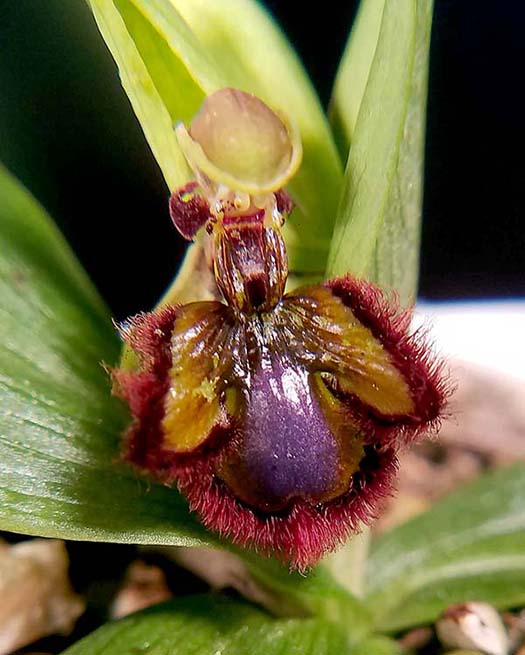 |
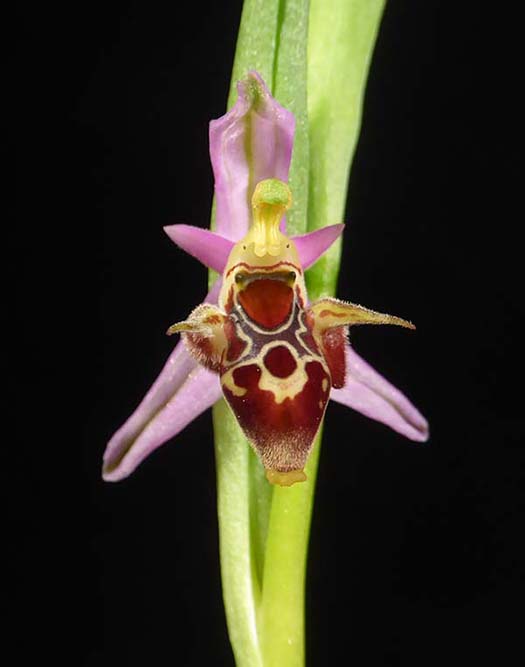 |
Ophrys speculumIf you were a male bee, wouldn't you think "she" was beautiful? |
Ophrys cerastes (scolpax)The taxonomy of this species is very confused - Orchidwiz showed well over a hundred synonyms and subspecies. Current Kew assignment is Ophrys cornuta. |
And the rest...also grown outdoors, unless othewise noted |
|
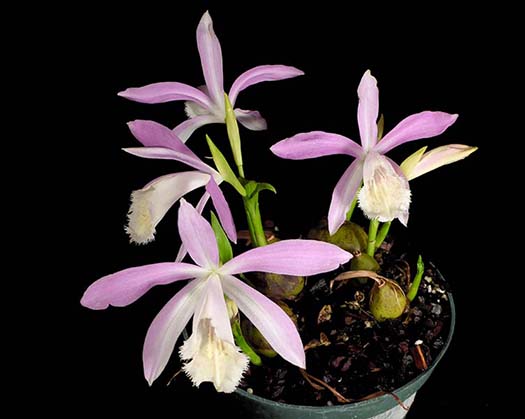
Pleione formosana |
|
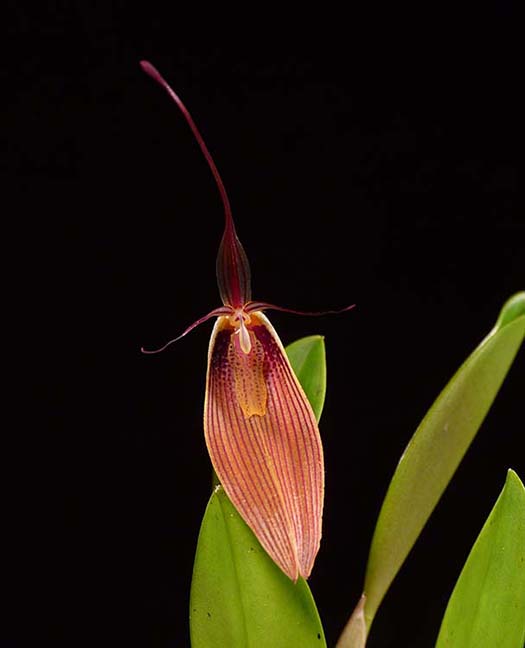 Restrepia antennifera 'Cow Hollow' |
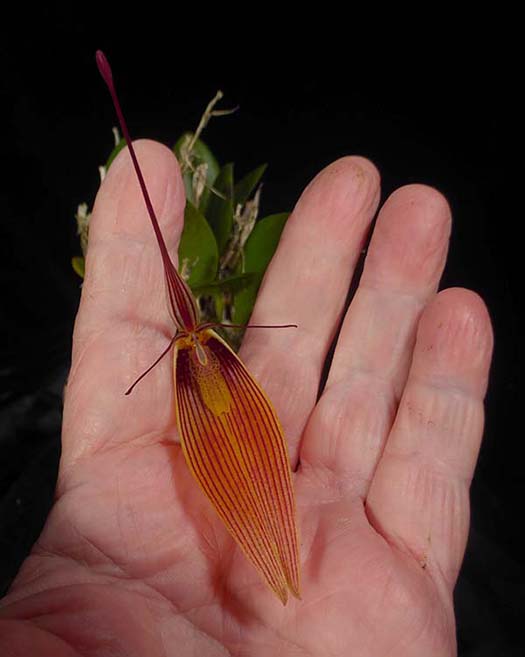 Last month I was excited by the large size of Restrepia sanguinea. Then early in March, Restepia antennifera bloomed and was twice as large as that one. My hand shows the scale. This flower is at least 4 inches in length. |
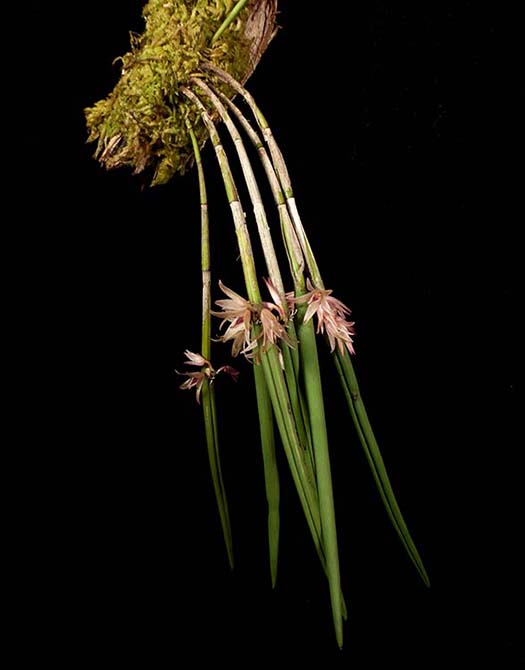 |
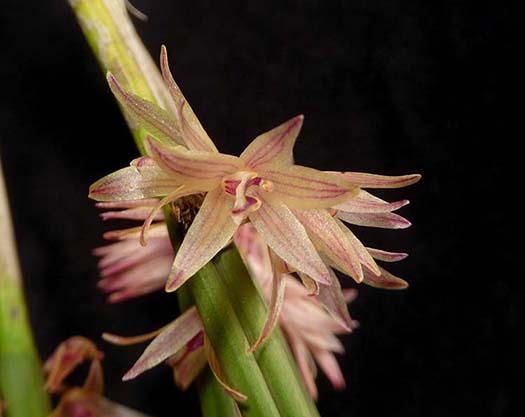 |
Octomeria praestansThis Pleurothallid blooms at least twice a year, since it was in bloom when I got it in the fall, and it has bloomed again. Other than learning that it comes from Brazil,I was not able to find much information about it, but the long succulent leaves make me guess that it comes from an area where it is seasonally rather dry since most Pleurothallids don't have this much water reserve. |
|
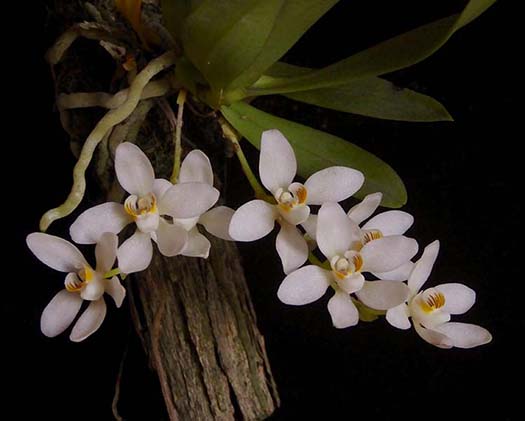
Sarcochilus falcatusThis species seems to particularly want to grow mounted, where other members of the genus accept pots. I grow it in a shady, damp area. |
|
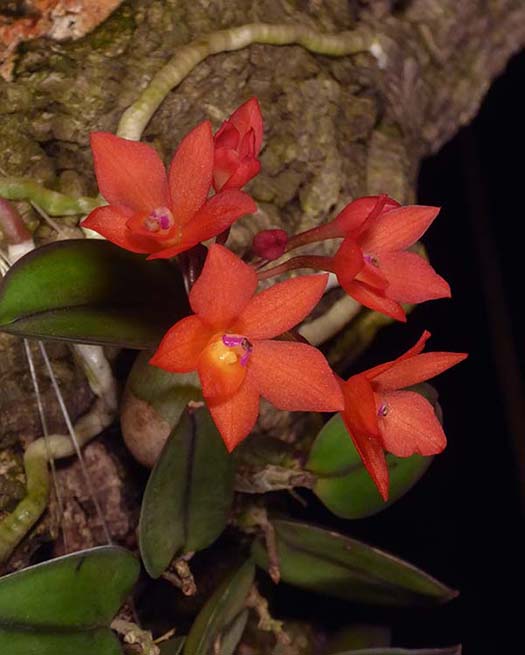
Sophronitis cernua ssp. MineiraFlowers are a bit smaller than the usual S. cernua, but the emerge in a cluster. This species has a reputation as wanting a bit more warmth than most Sophronits, but this one has grown vigorously outside, and blooms at least twice a year. |
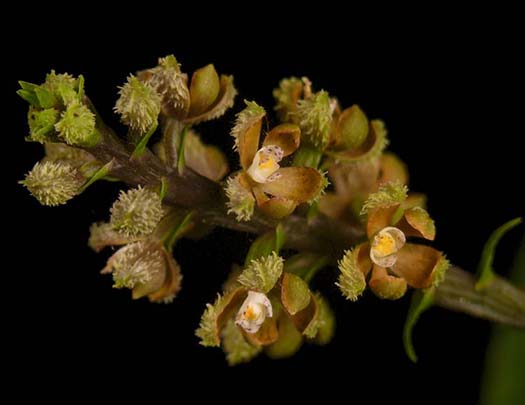
Encyclia maculosa (Prosthechea guttata)This species needs to grow mounted. The intriguing spiky flowers emerge sequentially, and the plant will be in bloom at least until fall. |
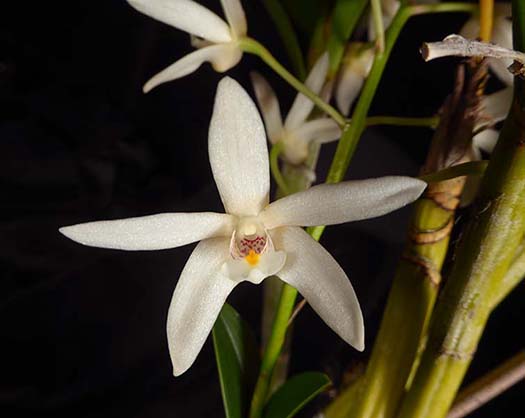
Dendrobium falcorostrumI'll let this one represent the Australian Dendrobiums that are putting on such a show this time of year. The flowers are crystaline. It needs a winter cool-down to bloom, but I don't reduce the water any more than for the rest of my plants. Fred Clarke describe having one in his greenhouse that just kept getting bigger, but not blooming. He put it ouside in disgust because it was taking up so much room,, and only then did it bloom, profusely. |
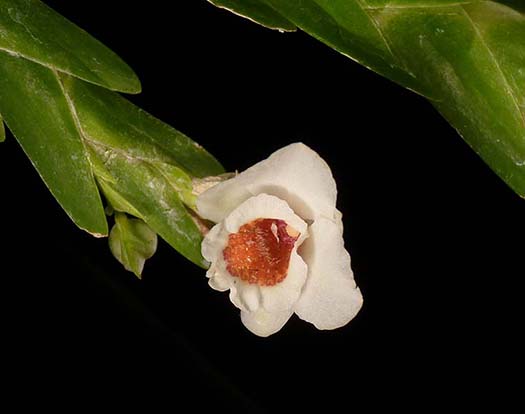
Lockhartia bennettiiThis species (and indeed, the whole genus) needs to grow mounted or in a basket. The "braided" leaves grow downward. The flowers can emerge from the leaf axils, but more often it blooms at the terminal end of the growth. |
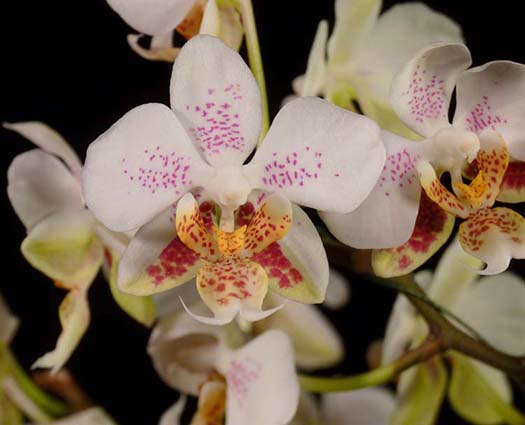
Phalaenopsis stuartianaIn the greenhouse, like most Phalsaenopsis. I have found that the species Phals do better for me in open baskets with minimal media. This species has beautiful mottled leaves |
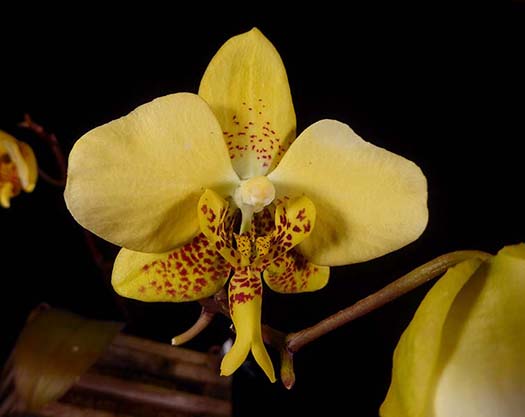
Phalaenopsis stuartiana ssp. nobilisThis yellow form of the species has similar markings on the flowers, but the leaves are not mottled, or if so only very slightly. |
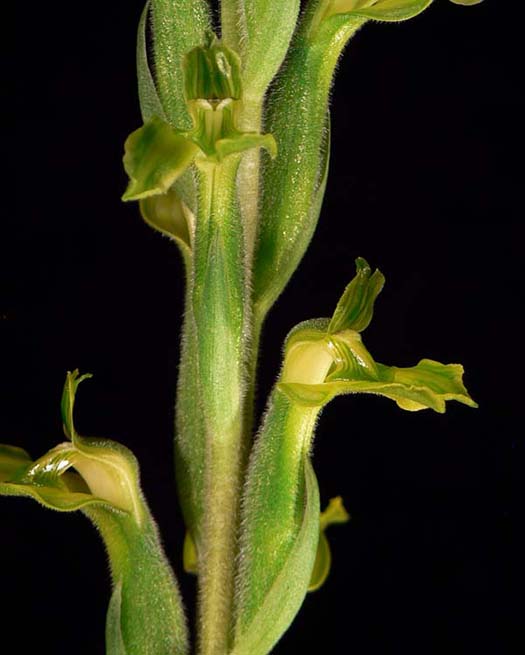 Sarcoglottis sceptrodesThis terrestrial grows in the greenhouse, but it could also grow nicely as a houseplant. The leaves are attractive, so that it is nice to look at even when not in bloom. The weird little flowers look to me like seahorses. Or maybe dragons. The leaves die back after bloomng, but the new rosettes emerge at about the same time. I grow this in a well-drained potting soil. |
|
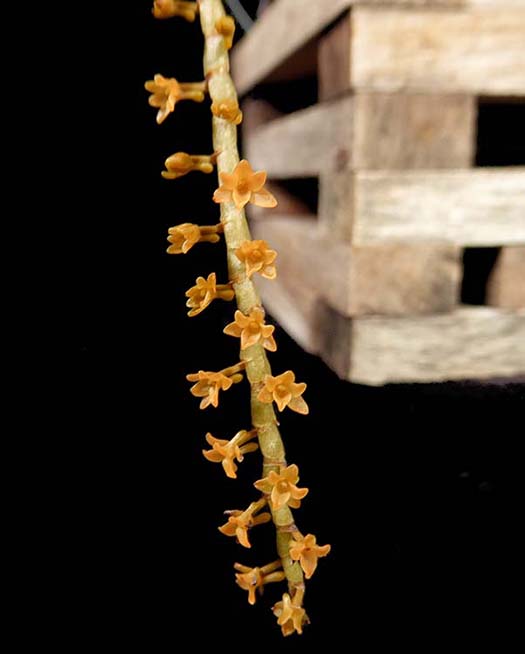 |
|
Microterangis hildebrandiiIn the greenhouse. When spikes emerge, the new ones are hard to distinguish from spent ones. It is best to wait until flowers start to open when cleaning up, to avoid cutting the wrong thing. Spikes open starting at the terminal end, moving upward to toward the plant. It grows in a wooden basket with little or no media, roots run wild. Little flowers, but lots of them. |
|



















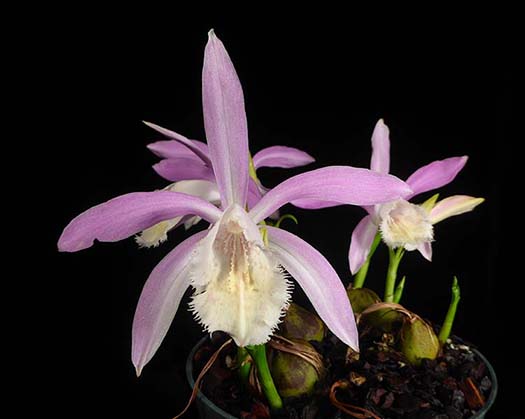 Pleiones lose their leaves in the fall, and in the spring bloom just as the new leaves emerge. Many species of Pleione need a very cold winter to bloom. However, this one is satisfied with what passes for winter in southern California. I reduce watering only a little, as I do with everything when it is cold. It does not seem to need a dry winter, and in fact does better being treated like everything else. The ideal time to pot is when they have gone dormant.
Pleiones lose their leaves in the fall, and in the spring bloom just as the new leaves emerge. Many species of Pleione need a very cold winter to bloom. However, this one is satisfied with what passes for winter in southern California. I reduce watering only a little, as I do with everything when it is cold. It does not seem to need a dry winter, and in fact does better being treated like everything else. The ideal time to pot is when they have gone dormant.